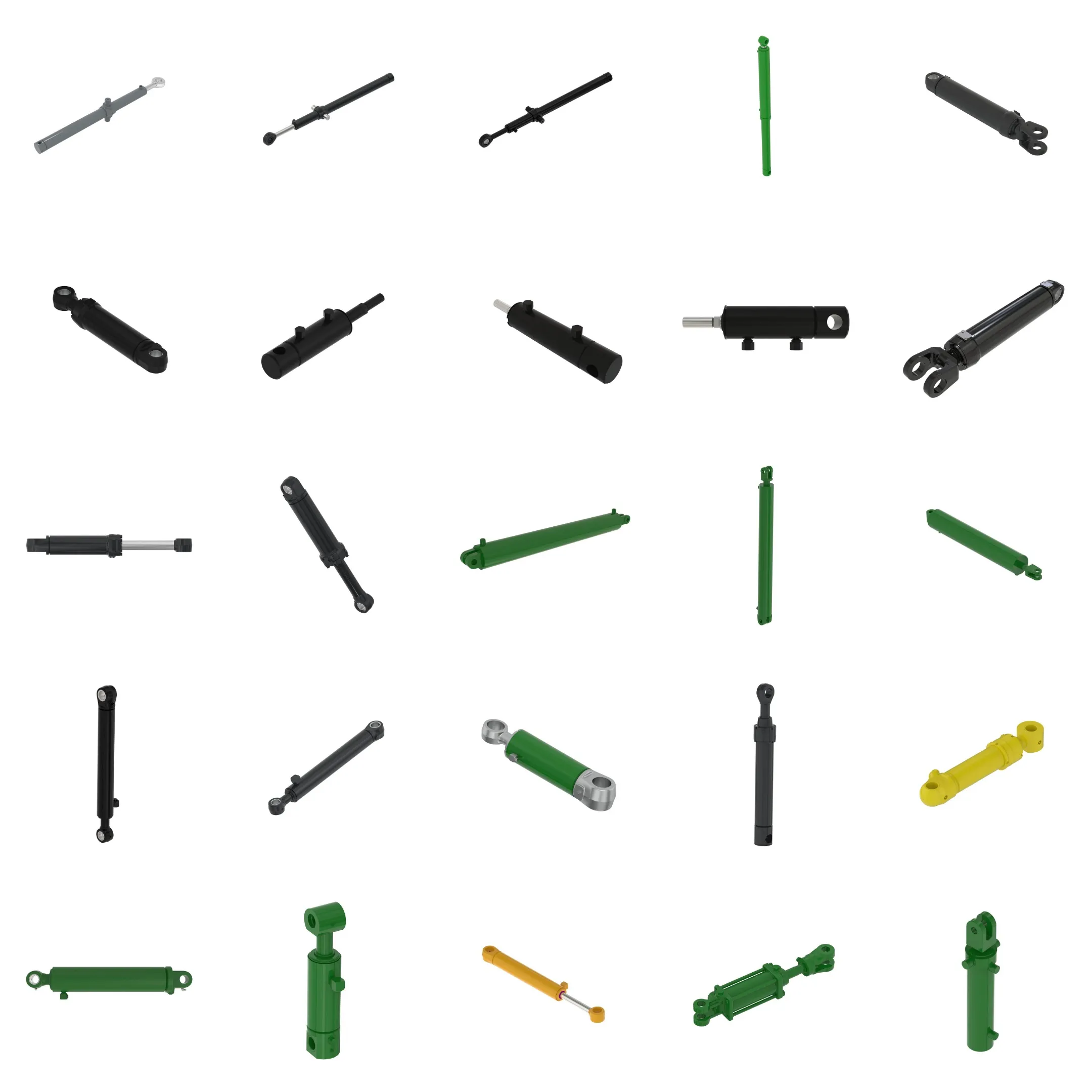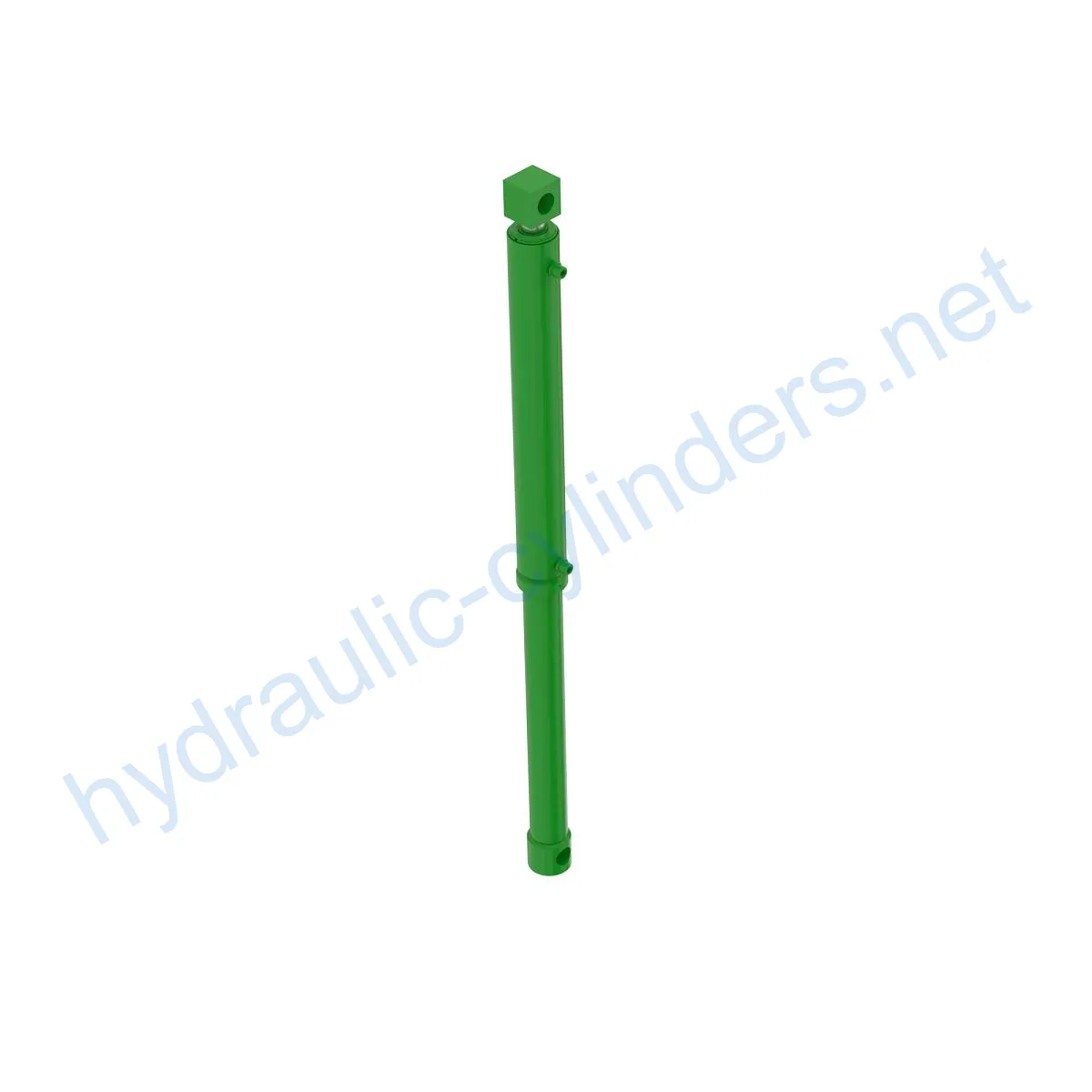Replacement Of AHC12621 Hydraulic Cylinder
Yhtenä hydraulisylinterien valmistajista, toimittajista ja mekaanisten tuotteiden viejistä tarjoamme hydraulisylintereitä ja monia muita tuotteita.
Ota yhteyttä meihin saadaksesi lisätietoja.
Posti:sales@hydraulic-cylinders.net
Valmistaja toimittaja viejä hydraulisylinterit.
Replacement Of AHC12621 Hydraulic Cylinder
Introduction
The Replacement Of AHC12621 Hydraulic Cylinder is a crucial component in various industrial machinery. This hydraulic cylinder is responsible for converting hydraulic power into mechanical force, allowing for efficient and precise movement. It plays a vital role in ensuring the proper functioning of equipment.
Specifications
- Weight: 82 lb
- Height: 6.6 in
- Width: 10.6 in
- Length: 61.8 in
Model: H340
Features
- Improved Equipment Performance: Replacing damaged or worn hydraulic cylinders can restore the normal operation capability of equipment, ensuring its performance in various applications.
- Enhanced Safety: Regularly replacing hydraulic cylinders can reduce safety hazards caused by cylinder failures, ensuring the safety of operators and equipment.
- Overload Protection: Newly designed cylinders often incorporate better overload protection mechanisms, enhancing safety.
- Quick Installation: Modern hydraulic cylinders are designed for easy installation and replacement, minimizing downtime.
- Standardized Components: Many hydraulic cylinders are standardized products, making it easier to obtain replacement parts in the market.
Applications
- Excavators: Hydraulic cylinders in excavator arms or buckets may get damaged due to prolonged use or overloading, requiring replacement to restore normal operations.
- Cranes: Hydraulic cylinders in crane boom systems can wear out due to frequent lifting and lowering, necessitating regular replacement for safety.
- Tractors: Hydraulic cylinders in front-end loaders of tractors may develop leaks or performance issues during continuous lifting and tilting operations, calling for replacement.
- Harvesters: Hydraulic systems in harvesters endure high pressure during the harvesting process, and fatigue can lead to cylinder damage, requiring timely replacement to maintain work efficiency.
- Automated Production Lines: Hydraulic cylinders are used to control robotic arms and other automated equipment. Cylinder failure can significantly impact production efficiency, necessitating immediate replacement.
- Die Casting Machines: In high-pressure and high-temperature environments, hydraulic cylinders in die casting machines may experience performance degradation. Regular replacement ensures product quality.
- Mining Equipment: Hydraulic cylinders are employed for lifting and moving heavy loads in mining equipment. Due to harsh working conditions, regular inspections and replacements are necessary to avoid equipment failure.
- Bulldozers: Hydraulic cylinder wear on bulldozer blades can result in decreased pushing capacity, requiring timely replacement to maintain operational efficiency.
Maintenance Tasks
- Regular Inspection: Periodically inspect the hydraulic cylinder for any signs of wear, leaks, or damage.
- Proper Lubrication: Ensure adequate lubrication of the cylinder to minimize friction and maximize performance.
- Seal Replacement and Calibration Checks: Replace worn seals and conduct calibration checks to maintain optimal performance.
Safety Considerations and Environmental Factors
When using hydraulic cylinders, it is crucial to follow appropriate safety measures to prevent accidents and injuries. Implementing safety protocols and ensuring proper training is essential to protect personnel and equipment. Additionally, considering environmental factors such as proper disposal of used hydraulic components and adherence to environmental regulations is necessary to minimize ecological impact.
Troubleshooting and Common Issues
1. Cylinder Leakage: If the hydraulic cylinder is experiencing leakage, it may indicate damaged seals or other internal components. Inspect and replace the faulty parts to resolve the issue.
2. Insufficient Force: If the cylinder is not generating enough force, it could be due to low hydraulic pressure or worn-out internal components. Check the hydraulic system and replace any worn parts.
3. Erratic Cylinder Movement: Inconsistent or jerky cylinder movement may indicate a problem with the control valves or hydraulic lines. Inspect these components and address any issues accordingly.
Preventive Measures and Troubleshooting Tips
To effectively diagnose and resolve hydraulic cylinder issues, consider the following tips:
– Regularly inspect the cylinder for leaks, wear, or damage.
– Keep the cylinder properly lubricated to minimize friction and ensure smooth operation.
– Follow recommended installation procedures, including aligning the cylinder correctly.
– Use appropriate installation supports to secure the cylinder in place.
– Refer to recommended inspection, repair, and replacement procedures.
– Utilize genuine replacement parts and rebuilding services to extend the longevity of your hydraulic cylinder.

Design Considerations and Selection Criteria
When selecting a hydraulic cylinder, it is important to consider the following factors:
– Load-bearing capacity
– Sealing properties
– Durability
– Safety features
– Ease of maintenance and repair
Sealing and Lubrication
Hydraulic cylinders utilize various sealing elements such as piston seals and rod seals made of wear-resistant materials like polyurethane and nitrile rubber. The cylinder body and threaded ends undergo meticulous surface treatment to enhance wear resistance. Regular lubrication with appropriate hydraulic oil is necessary to ensure smooth operation.
Regular Inspection and Preventive Maintenance
- Ensure proper installation, lubrication, and adjustment for optimal performance.
- Provide guidance on aligning the cylinder correctly during the installation process.
- Suggest the use of appropriate installation supports to secure the cylinder effectively.
- Recommend inspection, repair, and replacement procedures.
- Offer replacement parts and rebuilding services to extend the lifespan of the hydraulic cylinder.
- Share techniques to improve the longevity of the hydraulic cylinder.
Product Installation Guide
Proper installation of the hydraulic cylinder is crucial for its optimal performance and longevity. Follow these guidelines:
1. Ensure the mounting surface is clean and free from debris.
2. Align the cylinder properly with the mounting holes.
3. Use suitable mounting bolts and tightening torque.
4. Verify that the cylinder is securely fastened and aligned with the equipment.
5. Connect the hydraulic lines according to the manufacturer’s specifications.
6. Perform a thorough inspection and function test before putting the equipment into operation.

About Our Company
We are a leading manufacturer and wholesale distributor of replacement hydraulic cylinders. Our company offers a wide range of hydraulic cylinders and has become a trusted name in the domestic and international markets.
Our Strengths:
- Professionalism: Our team consists of highly skilled and experienced professionals dedicated to delivering top-quality hydraulic cylinders.
- International Certifications: Our
Tutustu VR-tehtaaseemme:
Tutustu VR-tehtaaseemme seuraavalla kierroksella
Miten haarukkatrukin hydraulisylinteri toimii?
Hydraulisylinteri Sovellus:


